I have been lucky enough to track down an old Rolls Royce Nimbus gas turbine engine. This was used to power the Westland Wasp helicopter. This is a turboshaft engine and provides about 600 – 800 Shp.I thought about getting a Rolls Royce Viper initially, however I was discouraged as the starters can be a difficult to get hold of. The beauty of the Nimbus is that everything to get it running is attached to the engine itself.
The engine looks reasonable although the test stand is a bit tatty. My immediate plan is to get it running. In order to do this I will need to build up a control box with a few gauges, buy a couple of large batteries, oil and kerosene. I have to thank Ian bennett for providing me with some technical info about the Nimbus and getting the gauges to work.

April 2009
The control box for the Nimbus has been constructed. I used an old ATU box from my ham radio days that I had lying around and a few sheets of spare aluminium chequer plates. The gauges were sourced from E-bay as was the contacter relay. The construction is a bit tatty but it all works. Before firing it up for the first time I had to flush out the inhibiting oil from the fuel system by cold cranking several times. The first fire-up was quite impressive, lots of smoke and a few flames from the exhausts due to residual oil in the system. It worked first time and the noise was incredible.

I have run the Nimbus several times now and it seems to be more or less OK. I think the rear turbine oil seal is a bit leaky as the rear turbine housing smokes quite a bit. This is a common problem with these engines even after they have been serviced. It does not appear to be loosing to much oil and I will keep an eye on things for the time being. The next question is what to do with it…..well, it would be good to put it work so I reckon on the back of my old Landrover 90. This will make transporting it around alot easier if nothing else. Before we do that we will need to convert it into a pure thrust turbojet engine by removing the freepower turbine and gearbox section. I doubt the Nimbus will be powerful enough to propel the Landrover to any significant speed as the thrust/weight ratio is less than ideal, but what the hell, lets give it a go…….
May 2009
The first stage we need to do before installing the engine into the vehicle is to convert it from a turboshaft to a turbojet engine. I will need to remove the freepower turbine and gearbox and re-route the oil and fuel system plumbing. The Nimbus uses a gearbox governor to control the fuel flow to the main HP pump so a few pipes will have to removed and replaced with hoses. Similarly, the oil system is also shared between the gas generator and the gearbox and will also need to be diverted.
Here’s the gas generator section successfully seperated and suspended from the ceiling. I will weld up a new running frame that will fit into the back of the 90. The gearbox will be stored and used for another project (someday!). My fencing puller makes an excellent engine support.
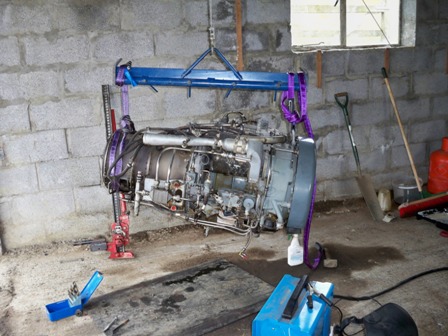
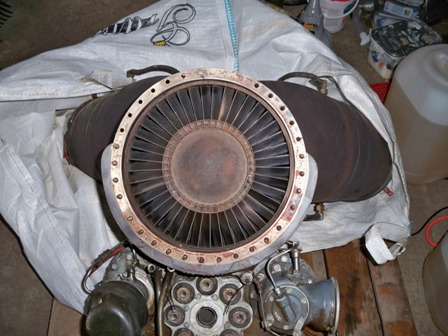
I have welded up the frame from some spare bits of heavy duty steel. The design is based on Adrian Bennett’s Jet Pick-Up VW Caddy. I have had to raise the height a little so that the air intake will sit above the rear bulkhead of the 90.
Here’s the frame, just needs a coat of green paint and then we will be able to mount the Nimbus onto it and start replumbing everything.
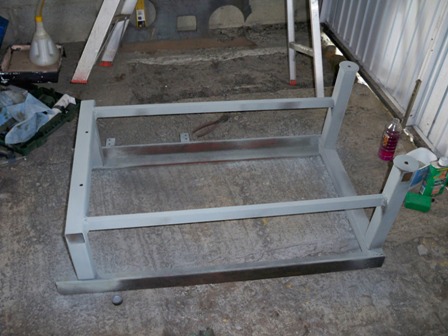
The Nimbus has been mounted on the frame and the re-plumbing completed, next stage is to lift it into the back of the Landrover.

The mini digger is very handy and I use this to lower the engine into the back. The frame is secured to the load bay with six large bolts. Although the loadbay is aluminium there are several steel supporting spars that the bolts pass through so the engine will be indirectly attached to the chassis. The frame sits on a thick rubber mat that will protect the loadbay and help damp vibration.
Below you can see the oil cooler that has been fitted to the frame. The oil feed to the gearbox has been re-routed back into one of the scavenge pipes (the yellow pipe on the left).
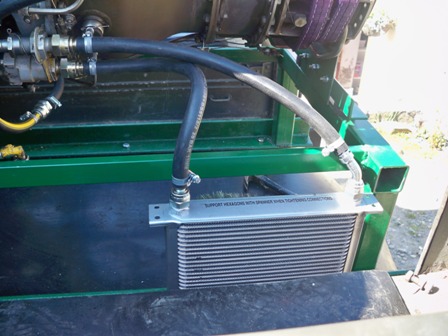
The starboard side of the engine shows the solenoid valve to operate the HP fuel cock and the terminals for the EGT thermocouple. I have used the original electrical loom to route the thermocouple leads back to the control box.
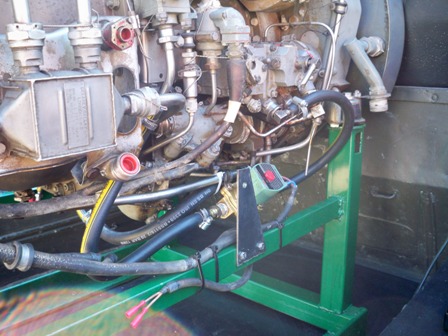
The air intake rests between the two headrests with just enough space. Most of the bell-housing of the engine consists of the oil tank. Believe it or not, the air intake is not that big considering the size of the engine.I have now modified the control box slightly to include a thermocouple meter to measure the EGT and fitted a throttle lever. The engine throttles up well although I have not gone past 85% RPM, very loud!!! Below you can see the control box as it sits in the cab.
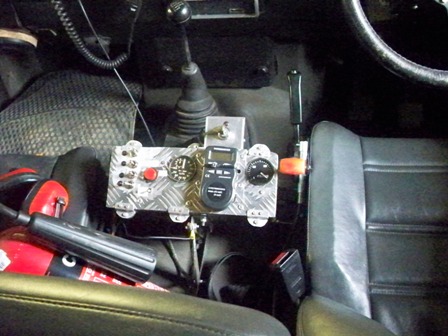
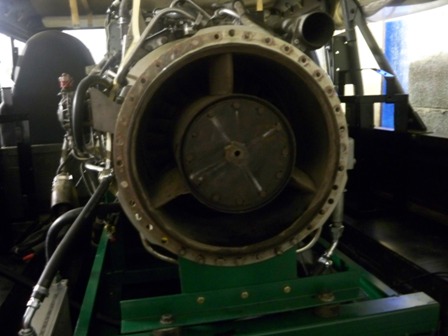
Shown below is the cone, this also has a bolt welded to it’s base, all we have to do is to screw it into the end of the bearing housing.The next job is to get an exhaust jet cone fabricated. This will be done by one of the local engineering firms in Swansea as it will be too tricky to fabricate and weld stainless steel at home.
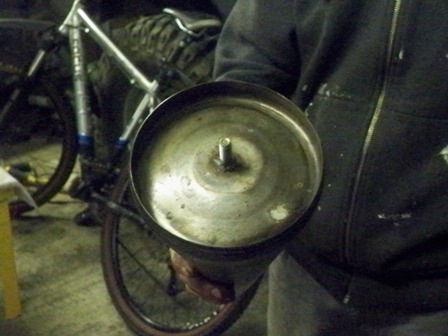
July 2009
Problems, problems, problems!!! I now have the stainless steel jet cone. Unfortunately, they’ve made a crap job of it and it only just fits onto the rear turbine casing. On one of the test runs I opened the throttle rather too quickly resulting in an overspeed.Luckily, everything was in control and the engine was shutdown immediately. No apparant damage. One thing I have noted is that after the engine has been run the rear turbine blades are catching on the casing, I believe this may be due to the new jet cone preventing the inner turbine lining from expanding properly as it gets hot so I have removed it and will have to think of a solution as to how to fit the exhaust cone.
The Landy has been taken for a spin on some deserted land. Guess what? the Nimbus is hopelessly under powered to even budge the 90. Anybody out there got a decent sized turbine they want to sell? Looks like its going to have to be a trip to Everett Aero for that Viper!
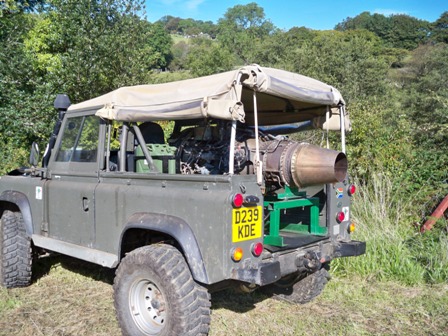
Watch A Video of The JetLandrover Engine Test Run
GO TO: http://www.youtube.com/watch?v=cH5rahj_dns